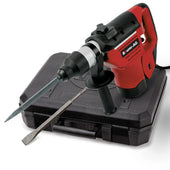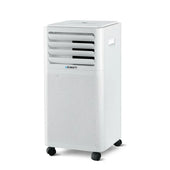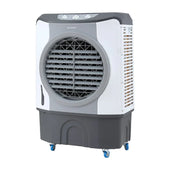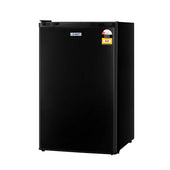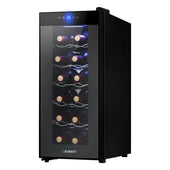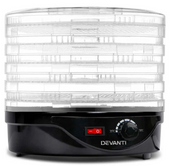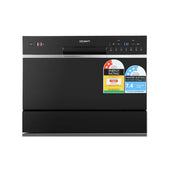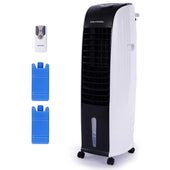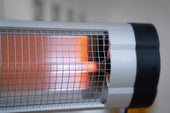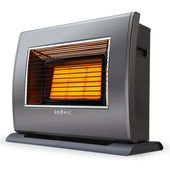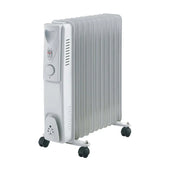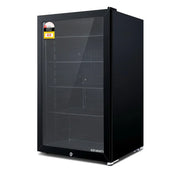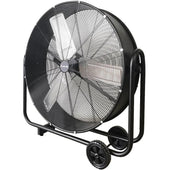Introduction to Microwave Technology
Microwave technology harnesses high-frequency electromagnetic waves to generate heat, enabling rapid cooking and heating processes. These waves operate within the frequency range of 300 MHz to 300 GHz, effectively exciting water, fat, and molecule particles in food. As these molecules vibrate, friction generates thermal energy, cooking or warming food evenly.
Modern microwaves utilise magnetrons to produce these microwaves, directing them through waveguides into the cooking chamber. The chamber is carefully shielded to ensure safety and prevent radiation escape. This non-contact heating method offers advantages such as energy efficiency and speed over conventional cooking appliances, catering to diverse culinary needs.
The Evolution of Microwaves: A Brief History
The history of microwaves begins in the 1940s with technological advancements during World War II. Radar research revealed the heating properties of microwaves when physicist Percy Spencer noticed a chocolate bar melting in his pocket. This discovery led to the invention of the microwave oven, with the first commercial unit, the "Radarange," introduced in 1947.
Initially, these devices were bulky, expensive, and primarily used in commercial settings. However, the 1960s and 1970s witnessed significant improvements, including downsizing and affordability, which made them viable for households. Today’s microwaves, available at During Days, are compact, energy-efficient, and integrated with smart features, symbolising decades of innovation.
The Science Behind Microwave Radiation
Microwave radiation stems from electromagnetic waves that fall within the frequency range of 300 MHz to 300 GHz in the electromagnetic spectrum. Modern microwaves utilise frequencies typically around 2.45 GHz, ideal for heating. These waves generate oscillations in polar molecules, such as water, causing them to spin and collide. The kinetic energy from molecular movement translates into heat, warming food efficiently.
The magnetron within the microwave converts electrical energy into microwave radiation. These microwaves are then dispersed uniformly using waveguides and rotating plates. Reflections inside the microwave cavity ensure even absorption, minimising cold spots. Microwave radiation is non-ionising, making it safe for day-to-day use when properly shielded.
Key Components Inside a Microwave Oven
A microwave oven relies on carefully engineered components to generate and manipulate electromagnetic waves for heating food.
- Magnetron: This is the heart of the microwave, responsible for producing microwaves by converting electrical energy into high-frequency electromagnetic waves.
- Waveguide: A metal duct that directs the microwaves from the magnetron into the cooking chamber.
- Turntable: Many microwaves feature a rotating glass plate to evenly distribute heat by exposing food to consistent wave patterns.
- Control Panel: The user interface that allows programming cooking times, power levels, and settings.
- Transformers and Capacitors: These regulate the high-voltage power required to drive the magnetron.
- Cooking Chamber: The insulated cavity that traps microwaves, ensuring they effectively heat water molecules in food.
How Microwaves Heat Your Food: The Mechanism Explained
Microwaves work by using electromagnetic radiation to heat food. This radiation is in the microwave frequency range, typically around 2.45 GHz. The process primarily targets water molecules, which are abundant in most foods. These molecules absorb the energy from microwaves, causing them to oscillate rapidly. The oscillation generates heat as a result of molecular friction.
The heat disperses through conduction and convection, warming adjacent molecules. This process takes place mainly from the surface inward rather than uniformly. Materials like plastics and ceramic are unaffected by microwaves, while metals reflect them, making metal containers unsuitable.
Understanding Microwave Frequencies and Wavelengths
Microwaves operate within the electromagnetic spectrum, typically ranging from 300 MHz to 300 GHz in frequency. These frequencies correspond to wavelengths between 1 millimetre and 1 metre. The most common household microwaves utilise frequencies around 2.45 GHz, chosen to efficiently heat water molecules in food.
Water, fat, and sugars absorb microwave energy effectively due to their molecular polarities. The relationship between frequency and wavelength follows the formula: wavelength = speed of light / frequency, where higher frequencies result in shorter wavelengths. This relationship impacts penetration depth and energy absorption.
Microwave ovens balance frequency with efficiency, ensuring uniform heating. Lower frequencies penetrate deeper, whereas higher ones primarily affect surface layers, demonstrating their practical design considerations.
Safety Features in Modern Microwave Ovens
Modern microwave ovens incorporate a multitude of safety features designed to ensure user safety during operation and extend the appliance’s reliability.
- Door Interlocks: Most microwaves come with multiple interlocking mechanisms that prevent the unit from operating when the door is open, reducing the risk of exposure to harmful microwaves.
- Automatic Shut-Off: A built-in system stops operation if overheating occurs, safeguarding against fire hazards and damage to the oven.
- Child Lock: Many models include child-lock functions to prevent accidental operation by children.
- Window Shielding: Specially shielded windows allow users to monitor food while effectively blocking microwaves from escaping.
These features collectively make microwaves safer and user-friendly appliances within homes.
Common Misconceptions About Microwave Cooking
Microwave ovens are often the subject of widespread myths that can lead to confusion. A common misconception is that microwaves cook food from the "inside out", but the microwave energy primarily interacts with water, fats, and sugars near the surface of the food. Another false belief is that microwave cooking destroys nutrients more than other methods — in reality, microwaving can preserve nutrients better due to its shorter cooking times.
Concerns about microwave radiation causing harm are also unfounded; the appliance is designed to prevent leakage. Furthermore, it is incorrectly assumed that metal cannot be used in microwaves. While this is usually true, specially designed metallic elements such as foil can safely be used in some cases.
Innovative Features in Today’s Smart Microwaves
Today’s smart microwaves, as essential kitchen appliances, are equipped with advanced technologies to enhance functionality and convenience.
- Voice Control Integration: Many models now support voice assistants such as Alexa or Google Assistant, enabling users to control cooking settings hands-free.
- Sensor Cooking: Built-in sensors can detect moisture and temperature levels inside the microwave to adjust cooking times and power levels automatically, ensuring evenly cooked food.
- Wi-Fi Connectivity: Smart microwaves can connect to home networks, allowing users to control the device via mobile apps from anywhere.
- Pre-Programmed Recipes: These microwaves offer pre-set cooking modes for various dishes, simplifying meal preparation for users.
- Steam Cleaning: Innovative self-cleaning features use steam technology to soften and remove stubborn residue with minimal effort.
Energy Efficiency and Usage Tips for Microwaves
Microwaves are designed to consume less energy compared to conventional ovens, but their efficiency largely depends on proper utilisation. Users can enhance energy efficiency by selecting the right containers; materials like glass or ceramic ensure better heat distribution. Cooking small portions or reheating leftovers in a microwave significantly reduces energy waste.
To optimise energy use, microwaves with an eco-mode or energy-saving settings should be prioritised. Cleaning regularly prevents the accumulation of residue that can affect performance. Heating food on medium power rather than high also conserves energy. Lastly, unplugging the microwave when not in use minimises standby power consumption.
Microwaves Beyond Cooking: Industrial and Medical Applications
Microwave technology extends far beyond kitchens, finding diverse applications in industrial and medical fields. In industry, microwaves assist in drying and heating materials efficiently, such as ceramics, food products, and textiles, ensuring uniform temperature distribution. Microwaves also enhance chemical reactions in processes like polymer synthesis, cutting production time significantly.
In medical settings, microwaves play a pivotal role in advanced treatments. Technologies like microwave ablation target tumours, using heat to destroy abnormal tissues precisely. Additionally, microwave imaging aids in early disease detection, offering non-invasive alternatives to traditional methods. Transitioning into sterilisation processes, microwaves provide reliable means to sterilise medical equipment swiftly.
Caring for Your Microwave: Maintenance and Longevity
Proper care is crucial to ensure the microwave operates efficiently and lasts longer. Regular cleaning prevents residue build-up, which can trap heat and damage internal components. Wiping the interior with a damp cloth after use removes spills and grease. Avoid using abrasive sponges that may scratch the surface.
Routine inspection is recommended to check for loose or damaged parts, especially the door seal, as a compromised seal can leak radiation. Use microwave-safe containers to minimise risks and avoid metallic items that can cause sparks.
Placing the unit on a flat, stable surface helps prevent vibrations, and ensuring proper ventilation avoids overheating. Adhering to the manufacturer’s guidelines extends its lifespan.
The Future of Microwave Technology: What’s Next?
Microwave technology continues to evolve, promising advanced features and greater efficiency. Upcoming models are increasingly integrating smart connectivity, allowing users to control and monitor appliances via smartphone applications or voice assistants. These devices are expected to incorporate sensors that adjust cooking times and power levels automatically by detecting food type and quantity.
Developments in solid-state microwave technology aim to replace conventional magnetrons, offering more precise energy delivery and enhanced energy efficiency. This innovation could also enable multi-frequency microwaves, which cook food more evenly.
Other possibilities include sustainable designs, such as the use of recyclable materials, and energy-saving modes suited for eco-conscious consumers. Future technologies might bring personalised cooking profiles, where machines learn user preferences to prepare meals seamlessly.





